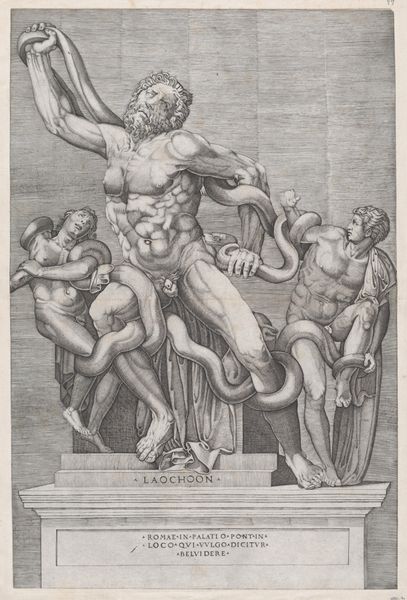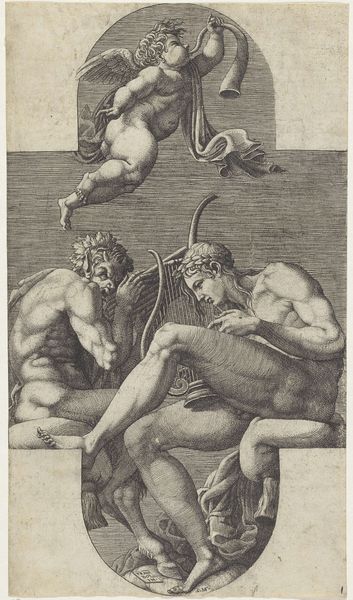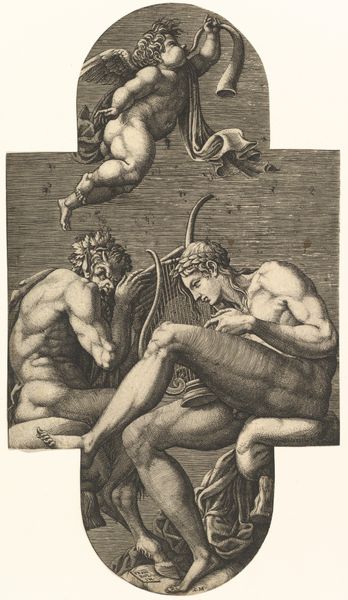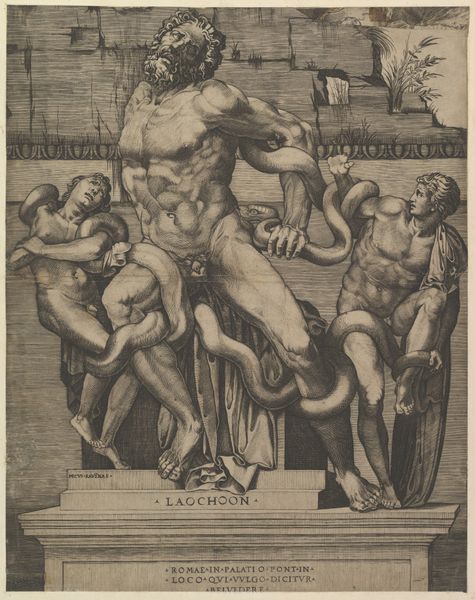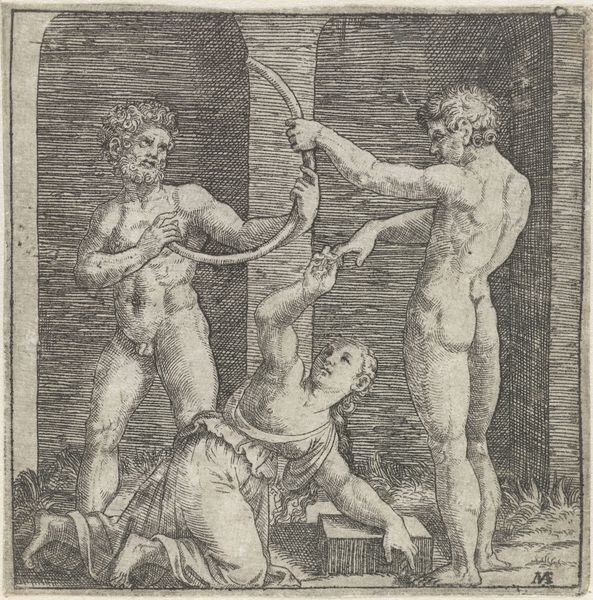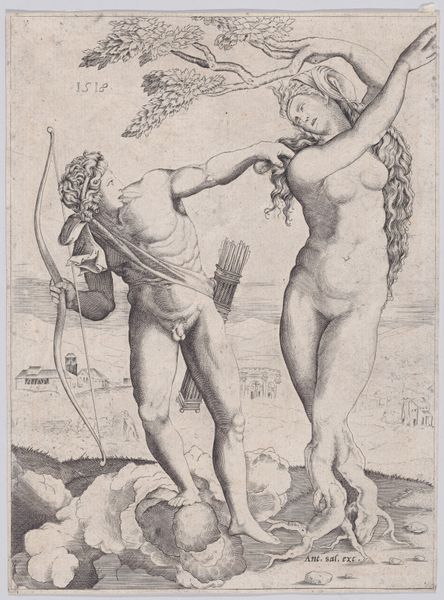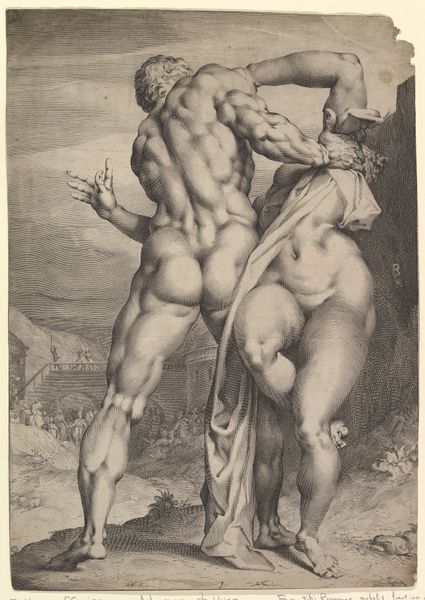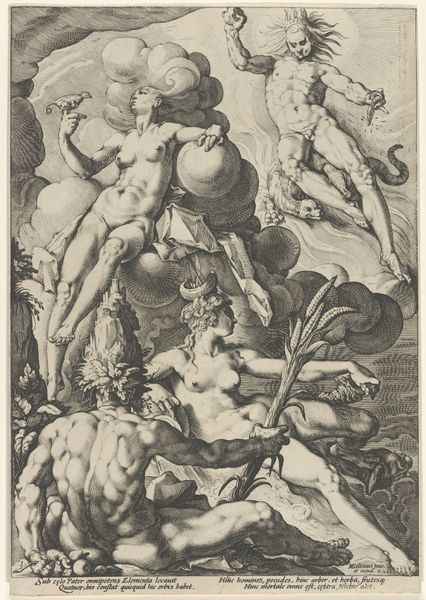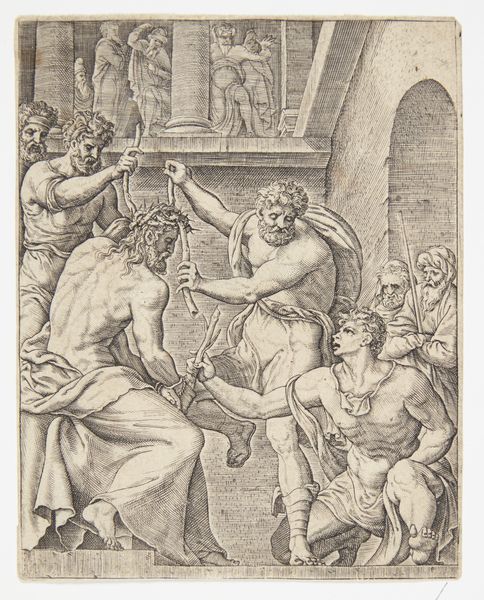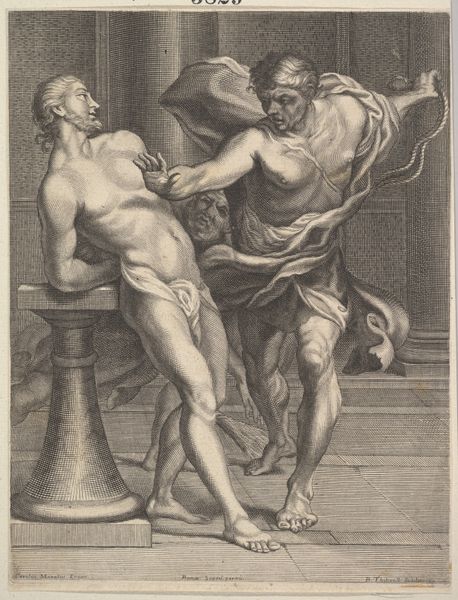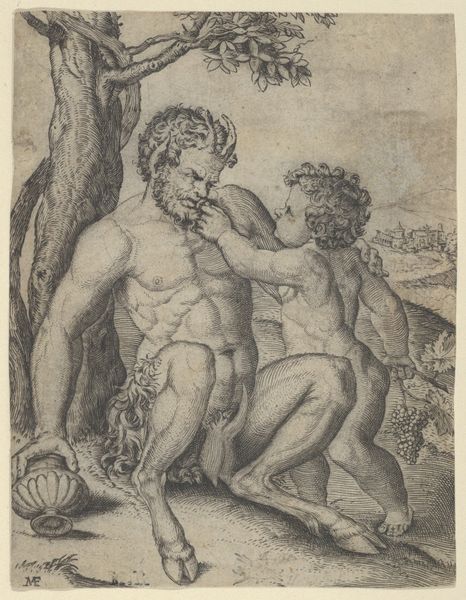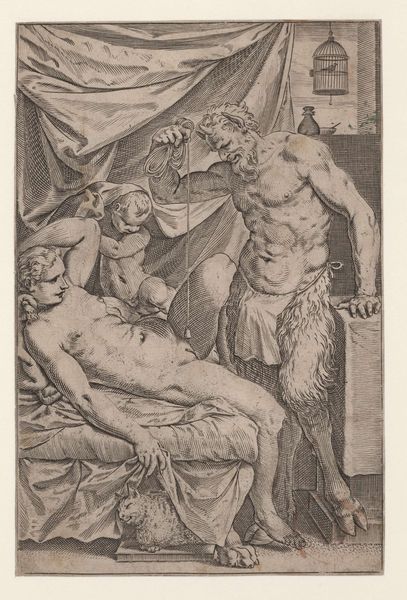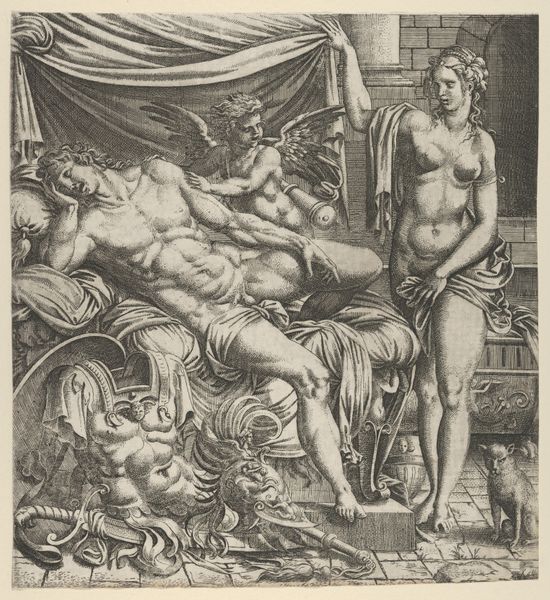
drawing, print, engraving
#
drawing
# print
#
mannerism
#
figuration
#
history-painting
#
nude
#
engraving
Dimensions: sheet: 6 9/16 x 5 5/8 in. (16.7 x 14.3 cm)
Copyright: Public Domain
Curator: Here we have "Three Figures Including a Hermaphrodite," an engraving made sometime between 1525 and 1600, attributed to René Boyvin. Editor: It strikes me immediately as unsettling, almost violent. The contorted bodies, the stark contrast in the engraving, it's quite intense. Curator: Absolutely. As an engraving, the material constraints imposed limitations regarding tonality, which often heightened the drama and dynamism within the image. Let's not forget the cultural obsession with classical forms and the anxieties surrounding gender and identity played out in the era of Mannerism. It also has the hallmarks of the School of Fontainebleau and its characteristic influence on printmaking techniques. Editor: Indeed. Consider the era; this work emerges amidst significant religious and political upheaval. The figure of the hermaphrodite, in particular, must be read within broader discourses on transgression, deviation, and the policing of the body. How would this have been received in different social strata? I imagine its meaning varied drastically. Curator: Undeniably. These prints, though seemingly 'minor' arts, circulated widely and served to disseminate artistic and ideological trends. The labour that goes into crafting the composition by means of using certain specific types of tools to create its effects needs attention. Furthermore, their commodification via merchant networks makes a discussion on reception more rounded. Editor: And the image itself acts as a point of negotiation. It’s intriguing to contemplate its effect in the private collections versus public viewing. What type of dialogue did this imagery encourage, especially in courtly spaces? Curator: It's about how that visual exchange perpetuates or questions existing values and structures within artistic creation. Was Boyvin thinking about appealing to a specific viewership when using his tools, and what did he expect his workshop apprentices to take from it when developing their own trade secrets and practices? Editor: Such a complex image warrants ongoing exploration. The intricate engravings reveal the concerns regarding social standing through subtle symbolisms, demonstrating their potential impact. Curator: And by analysing the means of creating prints we can look at the political undertones and questions of gender that were starting to arise in culture back then. Editor: Ultimately, Boyvin’s work reminds us that artworks, are shaped and given shape by both artistic intention and cultural reception.
Comments
No comments
Be the first to comment and join the conversation on the ultimate creative platform.
